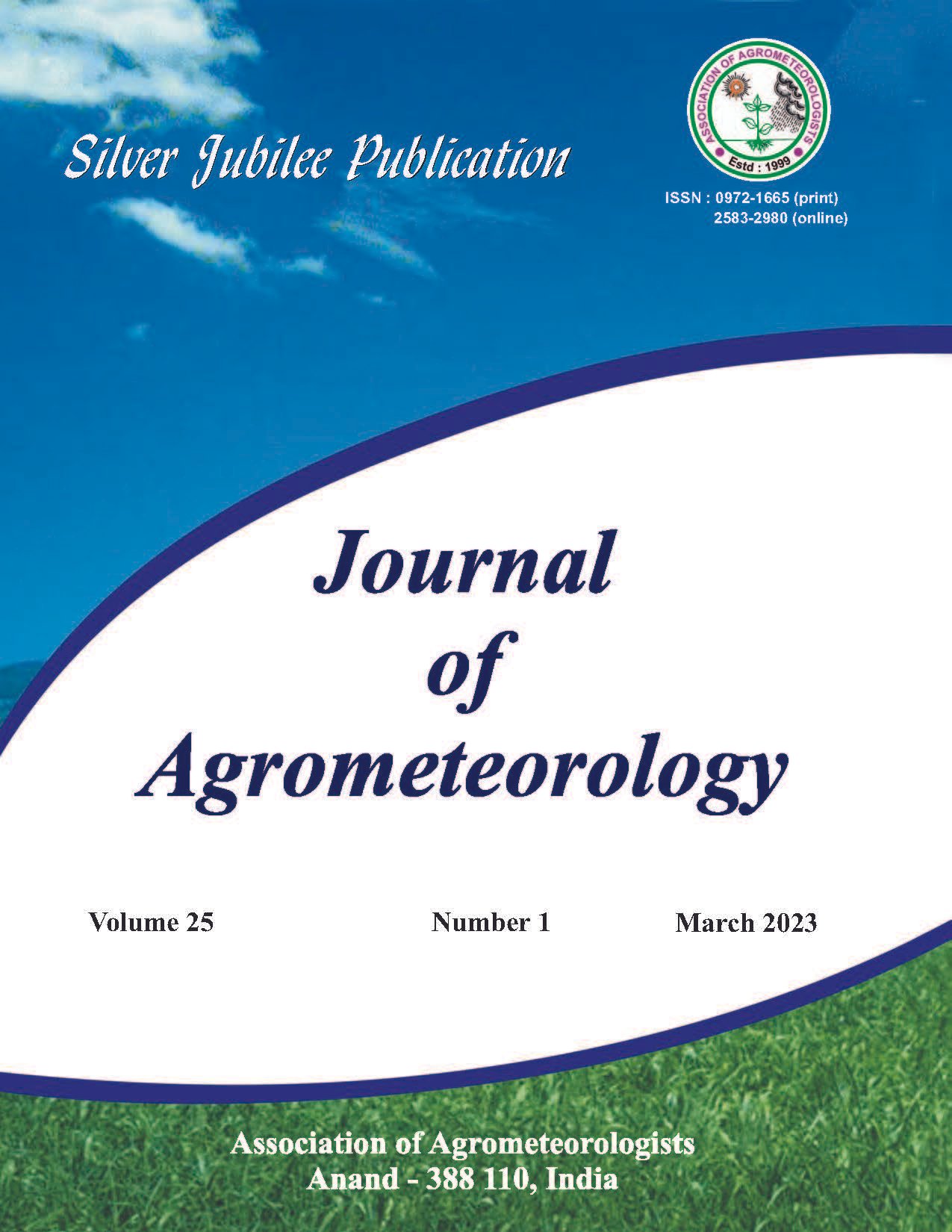Importance of solar radiation and the need for improved respect to Sun by Agrometeorologists
DOI:
https://doi.org/10.54386/jam.v25i1.1971Keywords:
Solar radiation, Photosynthetically Active Radiation, Net Radiation, Photosynthetic photon flux density, Improved respect to SunAbstract
Solar radiation refers to energy produced by the Sun, some of which reaches the Earth. This is the primary energy source for most processes in the atmosphere, hydrosphere, and biosphere. Solar radiation is of crucial importance inproviding the energy source for photosynthesis. During 1973 to 1977, when I did my Ph.D. in Agroclimatology in the Iowa State University, USA, I conducted the field experiments during 1975 and 1976 on soil-plant-water relations, growth and nutrient uptake patterns of field grown soybeans under water stress at the Western Iowa Experimental Farm, Castana. During these experiments, the solar radiation was measured with a pyranometer sensor mounted on an anodized aluminimum base. Daily solar radiation values were obtained from an LI-500 integrator attached to the pyranometer sensor. The attenuation of photosynthetically active radiation (PAR) and net radiation (NRAD) in the soybean canopy was determined during the growing season by using vertical profiles of radiation and leaf-area-index values. Once I received my Ph.D., I worked at the Headquarters of the International Crops Research Institute for the Semi-Arid Tropics (ICRISAT) in Hyderabad from 1977 to 1983 and at the ICRISAT Sahelian Center, Niamey, Niger from 1984 to 1996. In several field experiments in ICRISAT, the hourly values of net radiation were obtained through net radiometers mounted above the crop canopies. The growth and interception of PAR in a maize/pigeonpea intercrop and sole maize and sole pigeonpea crops grown in large plots were compared. The productivity of maize, sorghum, pigeonpea and a maize/pigeonpea intercrop in the operational research watersheds was measured in relation to the interception of PAR. In another study, it was shown that different shading ability of the crop canopies was one of the factors which determined the crop/weed competition balance and thus contributed to differential crop productivity observed in different cropping systems. Afterwards, when I worked at the World Meteorological Organization from 1996 to 2016 as the Chief of the Agricultural Meteorology Department, as the Director of the Climate Prediction and Adaptation Branch and as the Acting Secretary of the Intergovernmental Panel on Climate Change, a lot of work was done on Solar Radiation. Given all the above work on Solar Radiation, I emphasized the need for improved respect to Sun Bhagawan by Agrometeorologists at the end of this article.
Downloads
Published
How to Cite
Issue
Section
License
Copyright (c) 2022 MANNAVA SIVAKUMAR

This work is licensed under a Creative Commons Attribution-NonCommercial-ShareAlike 4.0 International License.
This is a human-readable summary of (and not a substitute for) the license. Disclaimer.
You are free to:
Share — copy and redistribute the material in any medium or format
Adapt — remix, transform, and build upon the material
The licensor cannot revoke these freedoms as long as you follow the license terms.
Under the following terms:
Attribution — You must give appropriate credit, provide a link to the license, and indicate if changes were made. You may do so in any reasonable manner, but not in any way that suggests the licensor endorses you or your use.
NonCommercial — You may not use the material for commercial purposes.
ShareAlike — If you remix, transform, or build upon the material, you must distribute your contributions under the same license as the original.
No additional restrictions — You may not apply legal terms or technological measures that legally restrict others from doing anything the license permits.
Notices:
You do not have to comply with the license for elements of the material in the public domain or where your use is permitted by an applicable exception or limitation.
No warranties are given. The license may not give you all of the permissions necessary for your intended use. For example, other rights such as publicity, privacy, or moral rights may limit how you use the material.





